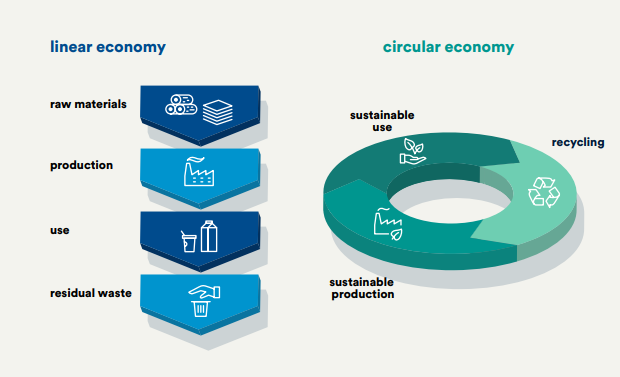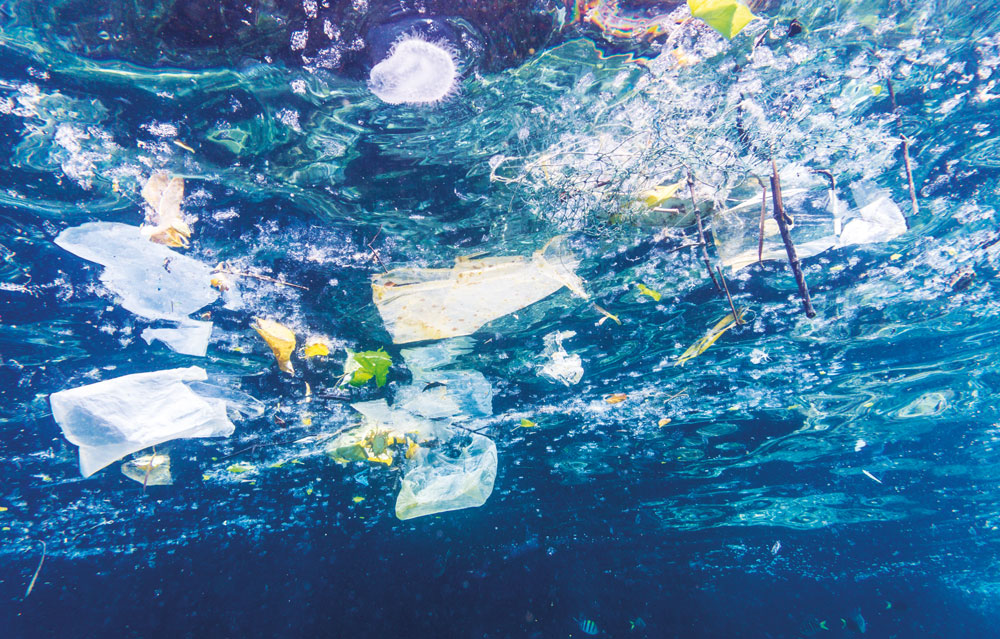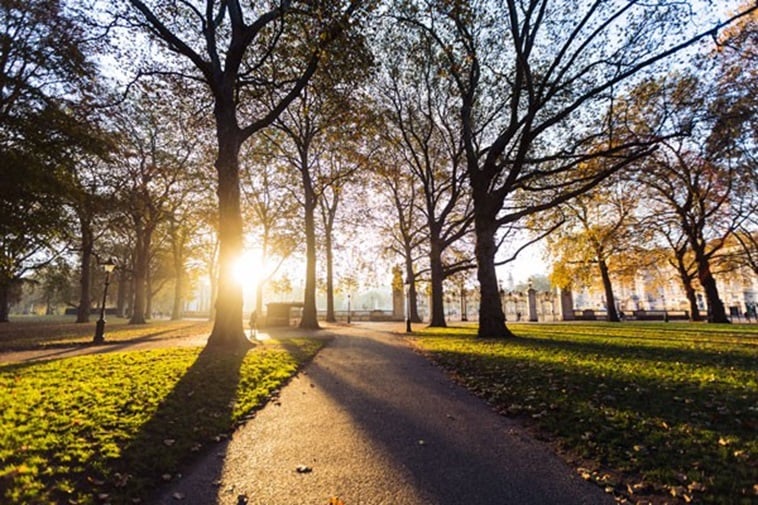What is the circular economy?
The circular economy is transforming the way we use and reuse resources, reducing waste and improving the sustainability of our planet. But what is the circular economy, and how does it work?
The term “circular economy” has become a buzzword in politics, science, innovation and even in cleaning products. But what exactly is the circular economy?
Bringing an end to the linear economy

First, it helps to understand what our current economic model looks like – one that is unfortunately the opposite of a circular economy. In the traditional “linear” economy, our resources have a lifecycle of take-make-dispose: we extract raw materials to produce products, we use the products, and then we dispose of them as waste after use. This is either because the products are difficult to recycle, due to product design or difficulties collecting the material, or simply because society doesn’t bother to recycle them.
In this current take-make-dispose model, large amounts of material quite literally go to waste. This is an unsustainable system for both people, planet and profit – as our environment and economies worldwide rely on a planet that has only finite resources. For example, estimates show that over 70% of plastic packaging ends up in landfill or, worse, littered in our streets and oceans. However, most plastic can actually be recycled multiple times – so when plastic is discarded, not only is the material itself lost, but also its future value.
In total, 8.3 billion metric tons of plastic have been produced since the 1950s – but only 9% has been recycled. Researchers estimate that 6.3 billion metric tons of material have gone to waste. If we continue this trajectory with “business as usual”, recent research has estimated that 29 million metric tons of plastic will end up in the ocean on an annual basis. And that’s just plastic; this doesn’t even include glass, aluminium, or materials used in construction, such as steel and cement.

How does the circular economy work?
Circular economy is a method of systems design that offers much needed change. As it is more a mindset or a way of setting up a system, and not a specific technology or thing, the concept is often used in many different contexts. Circular economy can be defined as a regenerative system, where we redefine what growth is, making sure we build economies that have positive effects on natural, social as well as economic capital. The circular economy is based on three principles:
- Design products to avoid waste and pollution
- Keep products and materials in use
- Regenerate natural systems

One simple way to understand the concept is to think of our economies – our systems of what we buy, eat and wear – in the analogy of a tree. A tree uses sunlight, nutrients and water from the soil, and carbon dioxide to make green leaves and produce oxygen. When fall comes, these leaves fall to the ground. After winter, the nutrients from the leaves are absorbed back into the soil, useful for either that one tree, or even the tree next to it. And so it continues in never-ending cycles, where everything has a purpose and nothing goes to waste. Simply put, these natural processes are what the circular economy aims to emulate.
An important element of circular economy is the idea of “design for recycling”. Recycling can refer to various processes, but the main thing is that materials and products have many lifecycles because they are designed in a way that maintains value and quality. If you were a bottle producer about to make a new bottle, you would ask yourself: how can I make this bottle so that it can be recycled after it is empty, and has the highest possible value for the bottle producer and recyclers?
A recent study highlights the importance of recycling not just for material purposes, but also for reduction in emissions associated with production. Looking at plastic materials in particular, one metric ton of recycled plastic feedstock on average offsets greenhouse gas emissions equivalent to 1.9 tons CO2. Also, reuse models, recycling, and true circular economy for materials (unlike landfill and incineration) generate revenue and green jobs. Recycling is one of the key means to a circular economy, ensuring material is not lost and reducing environmental costs of consumption.
Putting the circular economy into practice
Circular economies are transforming industries and are high on political and social agendas globally. At TOMRA, we use our sensor-based technology to enable the circular economy in several ways. TOMRA Collection works with solutions for Clean Loop Recycling of beverage containers. By returning your empties at a reverse vending machine (RVM), you are giving your bottle or can the best possible starting point for becoming a new container, by using dedicated infrastructure for taking back those products to keep the materials separate and of a higher purity and quality. At TOMRA Recycling we work with large-scale, industrial technology to sort mixed waste into different material types. This optimizes yield and quality of recyclable materials such as plastic, metals and paper.
Here are five more examples of ways the circular economy is reducing waste and increasing value.
We only have one planet, and everything we make and use will stay here with us – so it makes sense to emulate the success of nature itself and keep valuable materials in circular loops for both people and planet.

